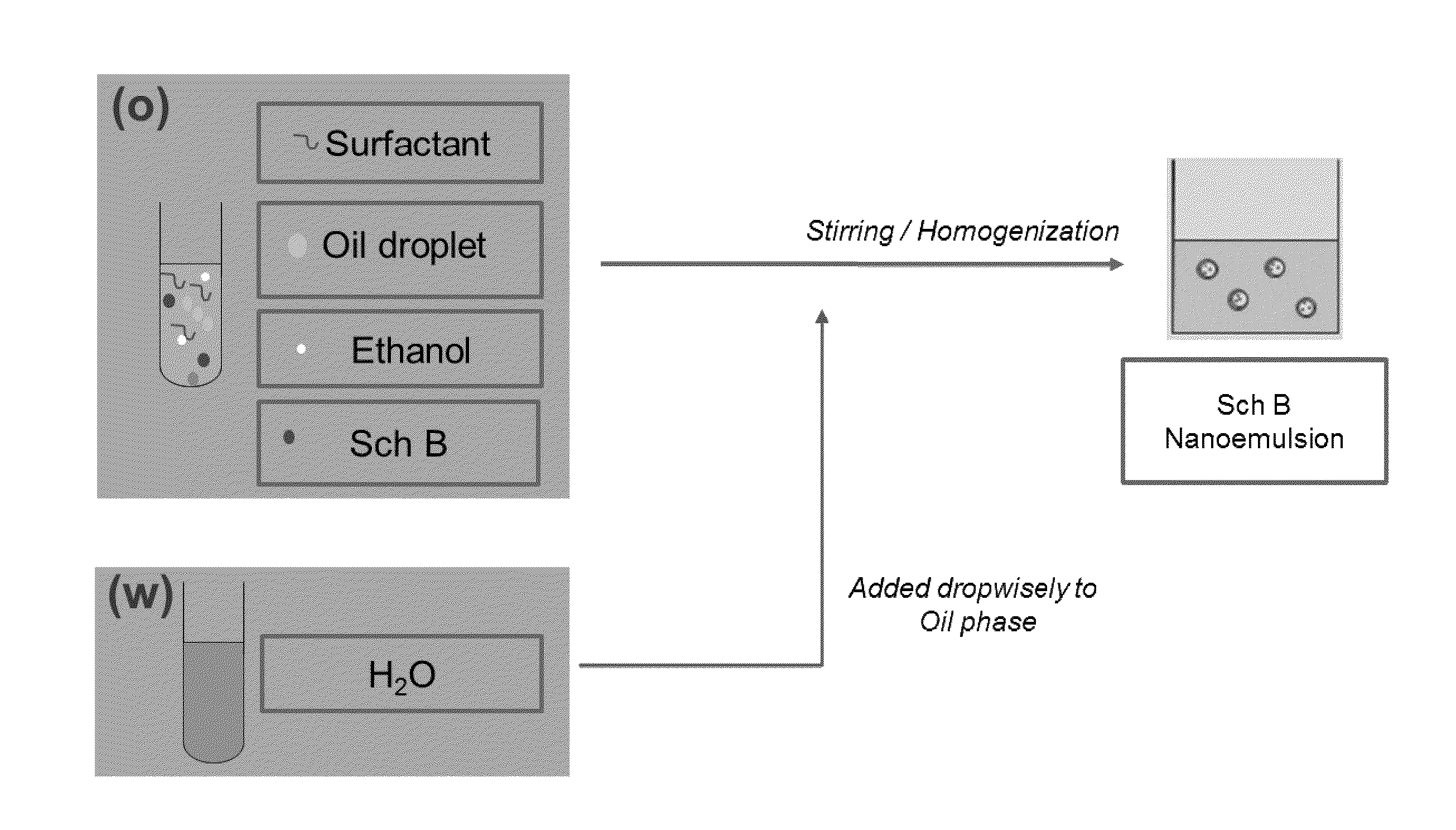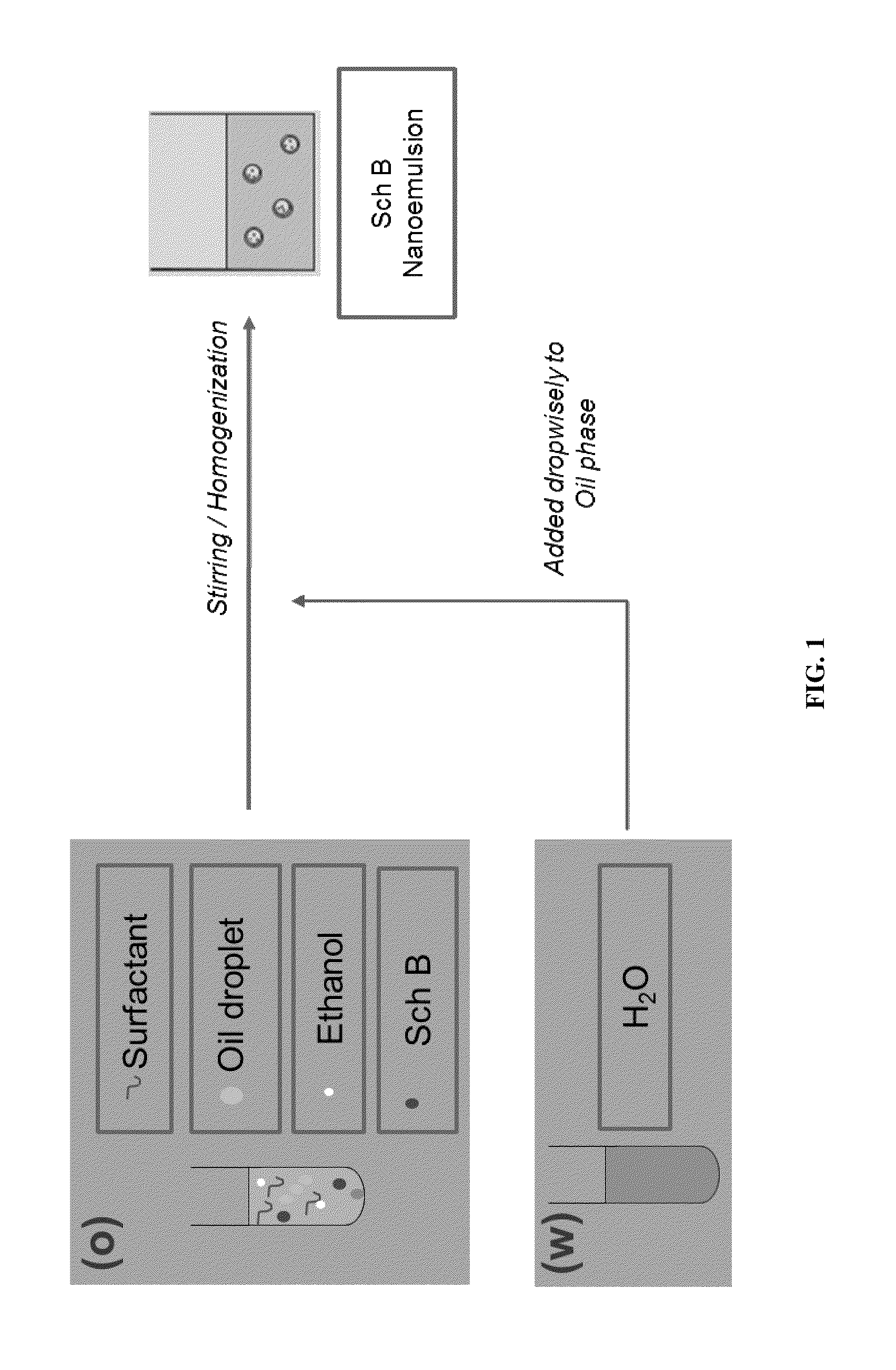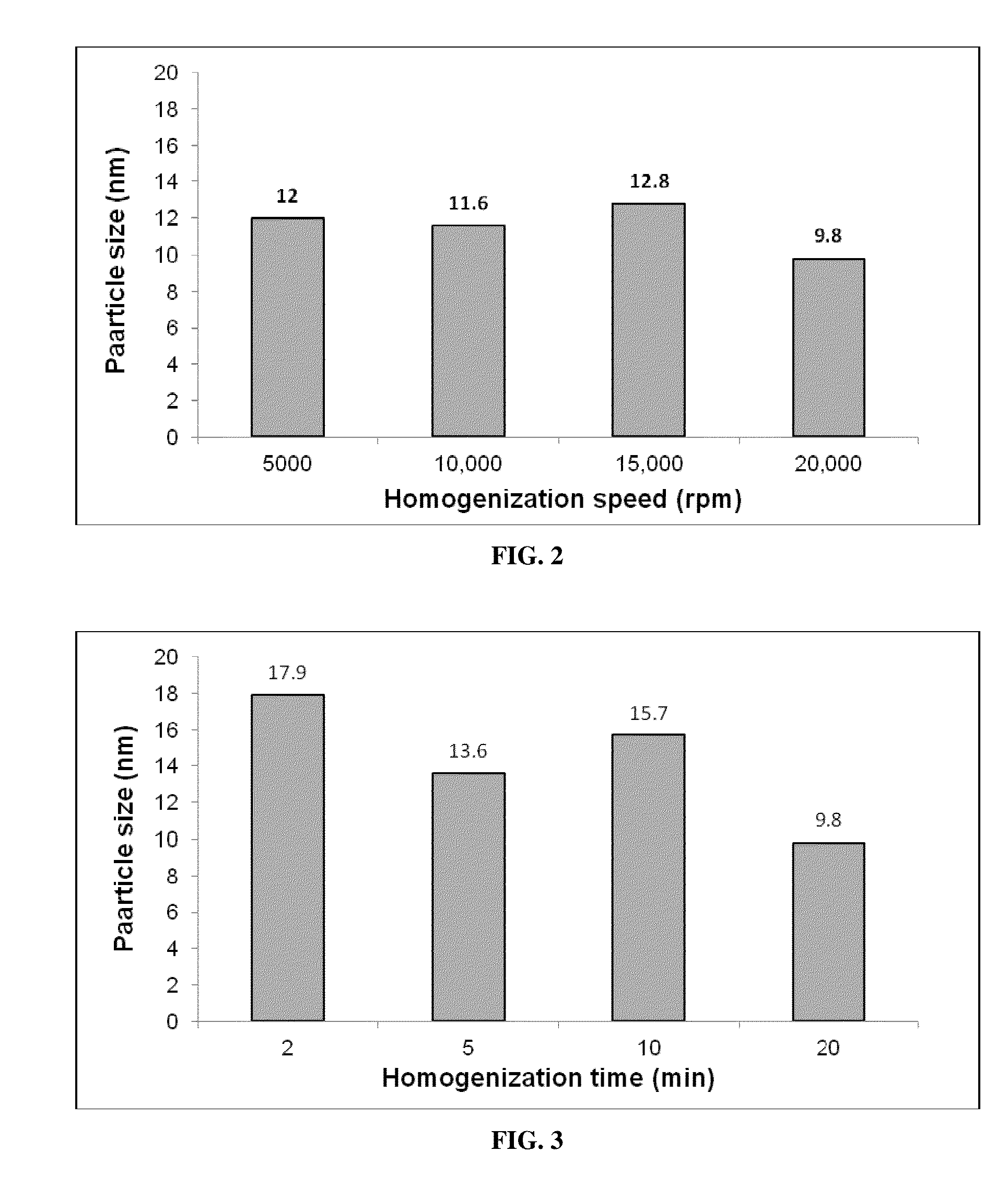Nanoemulsion for transdermal delivery and method of making the same
a technology of nanoemulsion and transdermal delivery, which is applied in the direction of biocide, peptide/protein ingredients, peptides, etc., can solve the problems of complex processing steps and human skin damage, and achieve the effect of efficient transdermal delivery
- Summary
- Abstract
- Description
- Claims
- Application Information
AI Technical Summary
Benefits of technology
Problems solved by technology
Method used
Image
Examples
example 1
A. Nanomization of Schisandrin B (Sch B)
[0052]A.1 Preparation of Sch B-Nanoemulsion
[0053]The defined amount of Sch B, oil and surfactant were firstly mixed together with ethanol. The mixture was then sonicated for 10 minutes in sonication bath to obtain a clear homogenous solution. Then, the required amount of water was added dropwisely under magnetic stirring (1000-2000 rpm) or homogenization (5000-20000 rpm) to form nanoemulsion. Resulting nanoemulsion was further stirred for a define time (2-20 mins). The preparation strategy of nanoemulsion is illustrated in FIG. 1. The nanoemulsion was stored at room temperature for subsequent uses.
[0054]The nanoemulsion system consisted of water, ethanol, oil and surfactant. The ratio of water to ethanol plus oil and surfactant is in a critical ratio of 27:73. The ratio of ethanol to oil to surfactant is about 1:1:2. The oil which may be used in the nanoemulsion include, and are preferably chosen from the group formed by: (1) esters of polyols...
example 2
B. Nanomization of Palmitoyl-Pentapeptide 3 (Pal-KTTKS)
B.1 Preparation of Pal-KTTKS-Nanoemulsion
[0067]The required amount of Pal-KTTKS, surfactant, oil and enhancer were weighted with a pre-determined weight ratio in a 20 ml vial. The mixture was then sonicated for 30 seconds. Double deionized water was then added to the mixture dropwisely under magnetic stifling (500-1500 rpm) or homogenization (8000-20000 rpm). The resulting nanoemulsion was kept stirring for the defined time (1-10 mins) to reach equilibrium state (FIG. 9). The nanoemulsion was stored at room temperature for subsequent uses.
[0068]The Pal-KTTKS-nanoemulsion system consisted of water, oil phase, surfactant and penetration enhancer, wherein the water content is up to 90% or equal to 70% by weight and the weight ratio of oil:surfactant is in a critical ratio of 1:9. The oil phases which may be used in the nanoemulsion include, and are preferably chosen from the group formed by: (1) esters of polyols and of fatty acids...
example 3
C. Nanomization of Epidermal Growth Factor (EGF)
C.1 Preparation of EGF-Nanoemulsion
[0084]The defined amount of oil and surfactant were firstly mixed together with ethanol. Terpene was added as a skin penetration enhancer. The mixture was then sonicated for 10 minutes in sonication bath to obtain a clear homogenous solution. The required amount of water containing EGF was added dropwisely under magnetic stifling (1000-2000 rpm) to form nanoemulsion. Resulting nanoemulsion was further stirred for defined time (1-20 mins). The preparation strategy of nanoemulsion is illustrated in FIG. 20. The nanoemulsion was stored at room temperature for subsequent uses.
[0085]The EGF nanoemulsion system consisted of water, ethanol, oil, surfactant and penetration enhancer. The ratio of water to ethanol plus oil and surfactant is in a critical ratio of 22:78. The ratio of ethanol to oil to surfactant is about 1:1:2. The oil which may be used in the nanoemulsion include, and are preferably chosen from...
PUM
| Property | Measurement | Unit |
|---|---|---|
| size | aaaaa | aaaaa |
| particle size | aaaaa | aaaaa |
| size | aaaaa | aaaaa |
Abstract
Description
Claims
Application Information
 Login to View More
Login to View More - R&D
- Intellectual Property
- Life Sciences
- Materials
- Tech Scout
- Unparalleled Data Quality
- Higher Quality Content
- 60% Fewer Hallucinations
Browse by: Latest US Patents, China's latest patents, Technical Efficacy Thesaurus, Application Domain, Technology Topic, Popular Technical Reports.
© 2025 PatSnap. All rights reserved.Legal|Privacy policy|Modern Slavery Act Transparency Statement|Sitemap|About US| Contact US: help@patsnap.com



